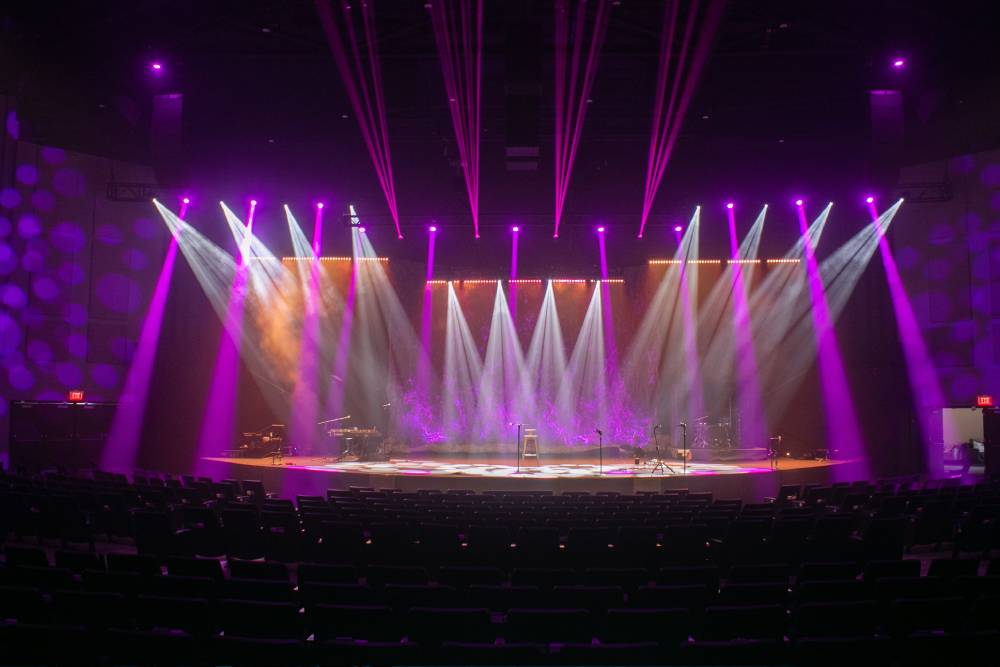Lighting for stage design doesn’t only revolve around the bright colors and flashy lights, it’s the art of setting the stage for any event such as a concert, event, or show. An effective lighting design is able to make your viewers feel every beat, emotion, and moment of the story. It’s not only focused on what your eyes can see, sophisticated techniques such as the use of sound masking can be utilized to increase concentration, eliminate the amount of noise that is a nuisance, and to create the most complete experience for all within the space. The stage lighting design industry in 2025 has been evolving at a faster pace than ever before and blending creativity, technology as well as functionality to create new, exciting experiences.
Why Stage Lighting Design Matters
Setting the Mood and Atmosphere
Imagine a show without the radiance of precisely timed lights. It would seem dull you think? Lighting on stage instantly changes the space and creates the perfect mood for every stage, performance or performance.
Enhancing Visual Storytelling
Lighting isn’t merely decoration; lighting is a powerful storytelling instrument. It can be used to highlight key performers or highlight emotions, it directs the eyes of viewers and their emotions.
Safety and Functionality
Beyond the aesthetics, lighting for stage helps performers and crew move safely. Additionally, it gives vital warnings of visibility for live productions.
Trend 1: Sustainable and Energy-Efficient Lighting
LED Innovations
LEDs have taken over the stage lighting market. They not only consume less power, but the latest LEDs are also able to provide vibrant colours and more striking effects than traditional bulbs can’t match.
Reduced Carbon Footprint
Events that are eco-friendly are popular. Utilizing energy efficient lighting can reduce carbon emissions, making events more sustainable and green.
Trend 2: Interactive and Immersive Lighting
Audience Engagement
The lighting that responds to the audience’s motion or music can result in a memorable, engaging experience. Consider concerts in which lights flash as well as clapping and cheers.
Integration with AR and VR
Integrating virtual and augmented realities with lighting can open the doors to an immersive experience on stage, making the audience feel an integral part of the show.
Trend 3: Smart Lighting Control Systems
Automated Shows
Automation can be a game changer. Intelligent systems are able to run complicated sequences flawlessly in tune with musical performances or other music which reduces human errors.
Customizable Presets
By using presets, event organizers are able to quickly change moods and scenes, thereby saving time while ensuring that the same theme is maintained throughout multiple events.
Trend 4: Minimalistic and Sleek Designs
Compact Fixtures
The latest lighting devices are slimmer, more sleek and easy to set up without clogging the stage.
Seamless Integration into Stage Sets
The minimalist lighting blends into the stage design and let the show be the star, yet delivering spectacular effects.
Trend 5: Dynamic Color and Effects
Advanced Color Mixing
The technology today can allow millions of colors to be combined which gives designers unimaginable creative possibilities.
Real-Time Effects Synchronization
Synchronized effects that are dynamic to video, music or the movement of performers make every performance feel lively and dynamic.
Trend 6: Mixing Light and Sound Masking
Enhancing Focus
It’s not just for workplaces, but it’s also making its way into event areas. Through reducing background noise, it allows spectators to concentrate on the event while lighting creates the stage.
Creating Ambient Environments
If paired with light and sound, it can create an energizing or peaceful ambience, based on the mood of the occasion.
Trend 7: Projection Mapping and Visual Effects
3D Stage Mapping
Projection mapping turns static set-ups into animated, dynamic canvasses and enhances the viewer experience.
Storytelling Through Visuals
Projection and lighting together will tell a story without any words making a cinematic experience on the stage.
Trend 8: Remote and Cloud-Based Lighting Management
On-the-Go Adjustments
Cloud-based solutions allow creators to manage lighting at any location, making it ideal for events with multiple venues or any last-minute adjustments.
Collaboration Across Teams
Multiple designers can collaborate live, making large-scale productions more smooth and efficient.
How to Choose the Righstage lighting design
Certain technologies, such as AR integration, or advanced projection mapping can be expensive. Choose the one that fits your budget but without sacrificing impact.
Venue Requirements
Some trends aren’t suitable for each venue. Be aware of ceiling height, space as well as electrical capacities prior to making a decision.
Audience Expectations
Know your audience. An event for a corporate event may need subtle style, whereas an event is best served by bold and immersive images.
Conclusion
Lighting for stage design by 2025 will be focused on blending technology and imagination. From sustainable LEDs, smart lighting technology to immersive experience and sound masking, changes are changing the way that audiences experience live performances. No matter if you’re an event coordinator, performer or a designer, being up-to-date to these new trends will help ensure that your performances will entice and excite.
FAQs
stage lighting design
Lighting stage design involves generating emotional effects on the stage with light angles, colors and intensities that enhance the performance.
Q2; What will the use of sound masking help stage performance?
Sound masking helps reduce background noise so that the crowd is able to focus on the show while enhancing the ambiance.
Q3 Do LEDs offer better quality than conventional stage lights?
Yes they are efficient in energy use, they are versatile in colors and effects, as well as more environmentally-friendly than traditional bulbs.
Q4: Can lighting trends impact audience engagement?
Absolutely! The dynamic, engaging lighting attracts the attention of viewers, increases emotions and keeps audiences engaged.
Q 5: What can you choose the ideal lighting configuration that is appropriate for the event?
Take into consideration your budget, the venue, your crowd expectations, as well as the nature of the event. Combining modern-day trends together with practical functionality to create the greatest impact.

